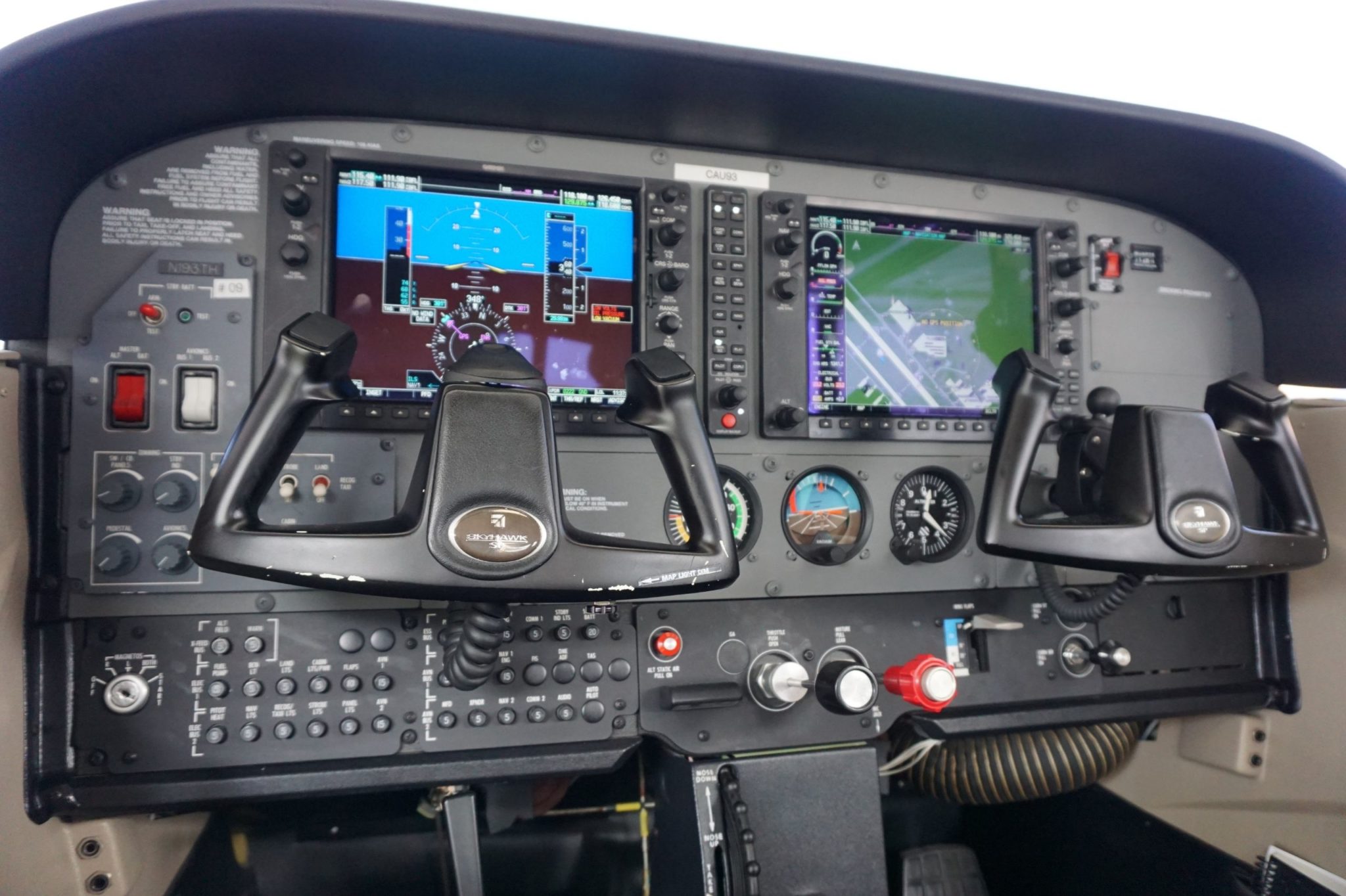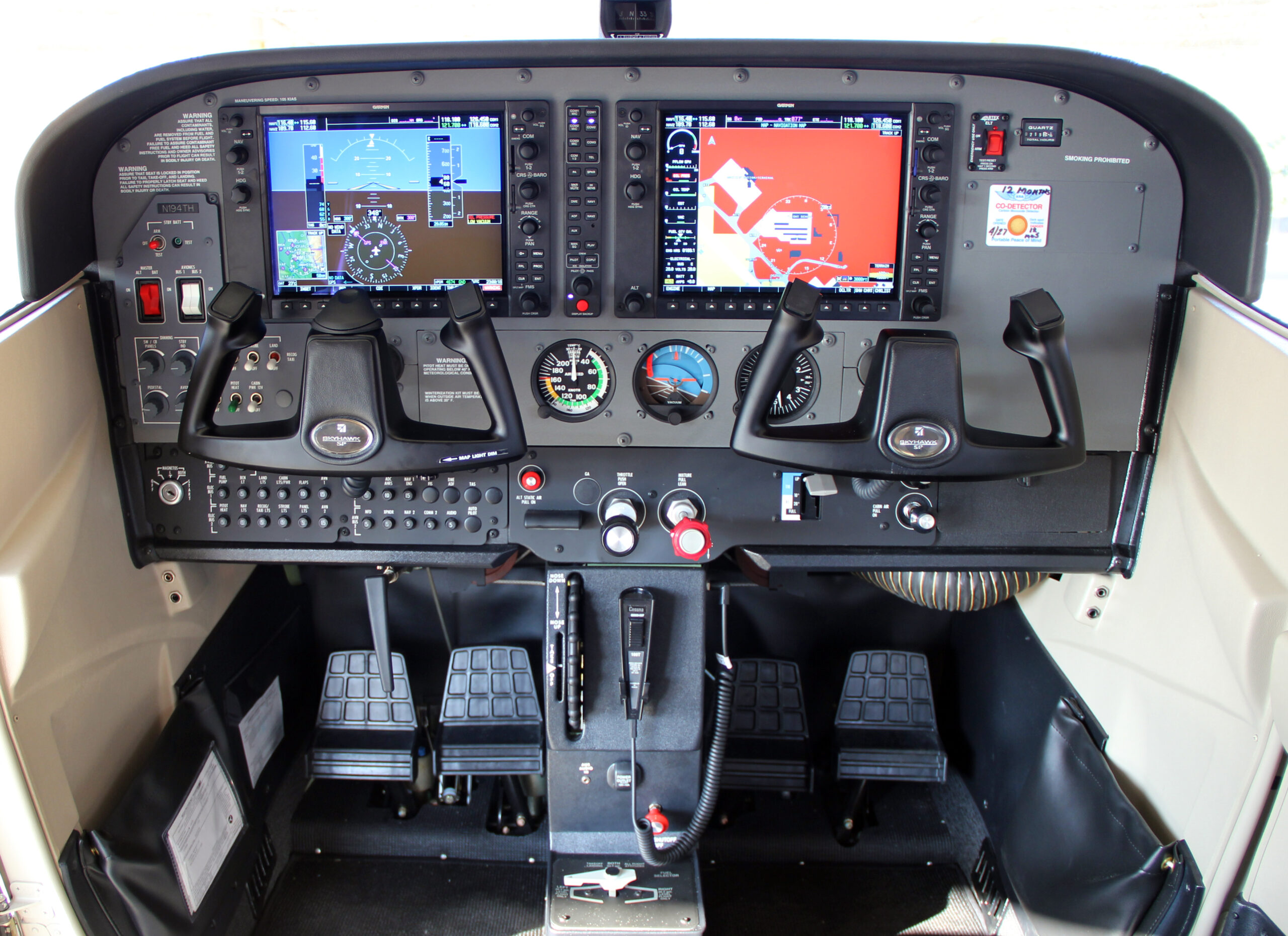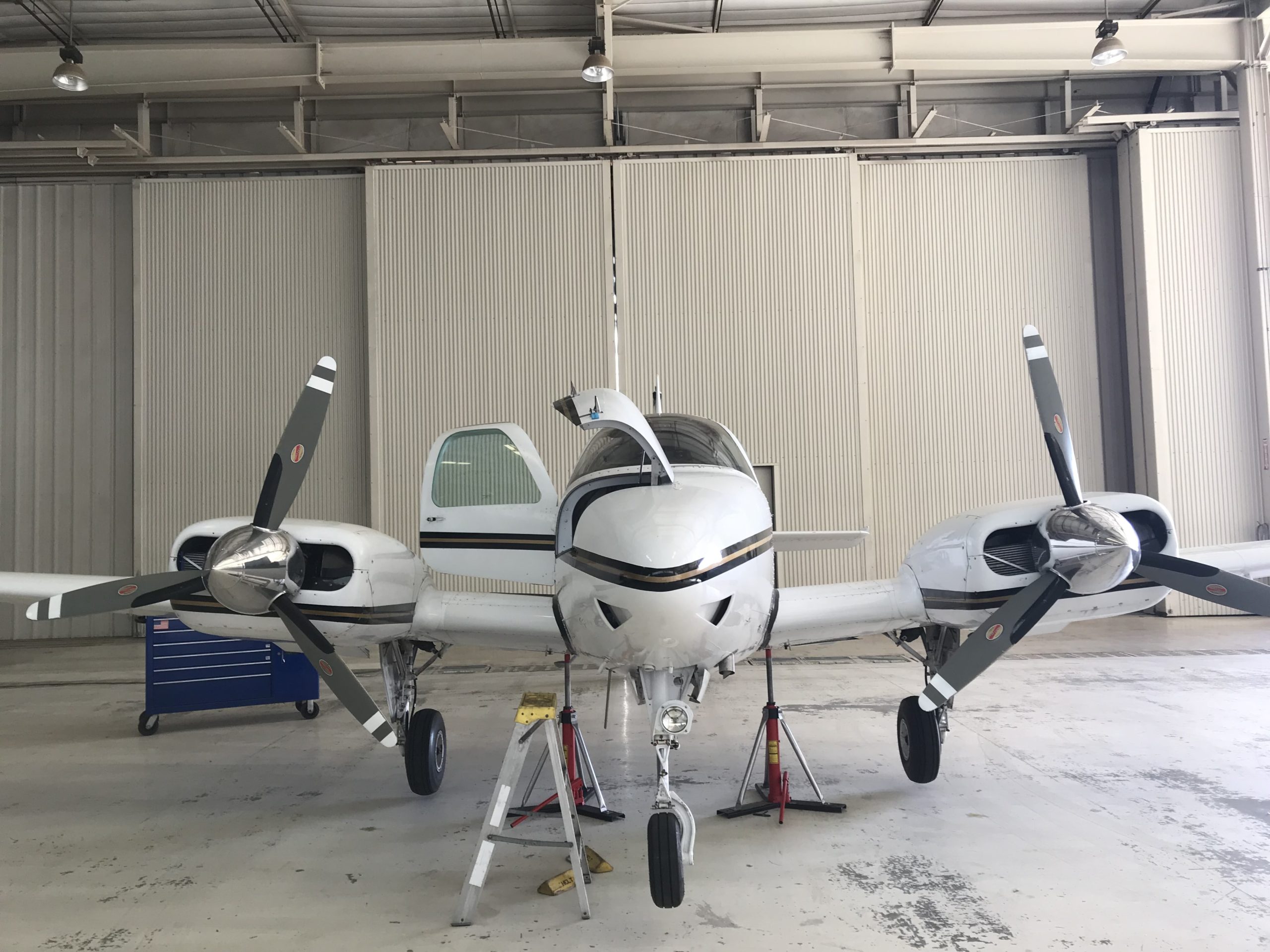The cockpit of an airplane contains instruments such as the vertical speed indicator that are essential for pilots to fly.
[lwptoc title=”CONTENTS:”]
Have you ever heard of an airplane’s “six pack?” These are the six essential instruments in the cockpit. They help the pilot know where the airplane is in the sky and provide important information at all times. The six pack consists of the airspeed indicator, altimeter, attitude indicator, heading indicator, and turn coordinator. In addition, the vertical speed indicator shows the airplane’s rate of either climb or descent.
This is displayed as feet per minute, or FPM, even in countries that use the metric system. The vertical speed indicator is what is known as a “differential pressure instrument,” which means that it gauges what the difference is in internal pressure between two specific areas. Data signals are monitored to provide real-time readings. The vertical speed indicator is also known as the rate of climb indicator, variometer, and vertical velocity indicator.
What Is Vertical Airspeed?
Vertical airspeed is the rate at which an airplane ascends or descends. It is different from ground speed. More specifically, the rate of climb tracks the airplane’s vertical airspeed, and the rate of descent, or sink rate, is how quickly the airplane is descending.
The airplane’s rate of climb has a relationship with Vx, or the forward airspeed for its optimal angle of climb. In the same way, Vy is the airspeed for the most efficient rate of rate of climb, or the amount of time it will take for the aircraft to reach a certain altitude.
How Does a Vertical Speed Indicator Work?
For an aircraft to earn an airworthiness certificate from the Federal Aviation Administration (FAA), it must have a pitot-static system (although an airplane is not required to have a vertical speed indicator.) Three of the instruments of the six pack, the speedometer, the altimeter, and the vertical speed indicator, are fed by the pitot-static system. The system works by measuring barometric pressure.
Within the airplane is a mechanical device with chambers that rises and falls depending on whether the aircraft is climbing or descending. In most modern airplanes, this is a chamber made of flexible metal. It is fed by a pitot tube located either beneath the wings (mostly on small airplanes) or on the fuselage on the side of the cabin (large airliners.) A pitot tube is a sensor which measures air velocity at a right angle to the direction of airflow.
These small tubes are usually L-shaped and are left open via a tiny static port. Pitot tube covers, made of vinyl, are slipped over the assembly and secured with straps to protect it when the airplane is on the ground. If you have seen brightly covered “Remove Before Flight” tags on an aircraft as it sits in a hanger or on a ramp, these are usually covering the pitot tube. This is because the pitot tube system cannot work with the covers in place. One of the first items a student pilot learns while conducing a pre-flight walkaround is to check that the static port is not blocked by ice, mud, tape, or the pitot tube cover.
Through a series of rods and gears, the airflow entering the port informs the vertical speed indicator display, which is traditionally a dial. Glass cockpits have a digital vertical speed indicator. It shows the rate at which the airplane is moving along this axis. The larger the pressure differential between the casing of the mechanism and the diaphragm, the more dramatic the movement of the needle.
When an airplane is in level flight, an opening within the diaphragm called the calibrated leak dissipates the air within. This then resets the vertical speed indicator to zero until the aircraft climbs or descends again.
Waiting On Airflow
Because the calibrated leak may take a while to equalize, it is important to realize that the display on the vertical speed indicator might take time to catch up to the actual rate of climb or descent. This is why it is important for pilots to take trend vs. rate into account.
Pilots might notice that when the needle on the vertical speed indicator starts to move, it might not give precise information about how quickly the airplane is rising or dropping. This is what is known as a “trend.” However, once the diaphragm, mechanism, and data relay are caught up with what is taking place in air pressure differentials, the vertical speed indicator quickly stabilizes, and the actual rate becomes available.
The gap between seeing the trend and knowing the actual rate can last anywhere between six to nine seconds. Small changes which are made slowly usually show up more quickly on a traditional vertical speed indicator, while sudden shifts in pitch can result in lags even longer than nine seconds. In some situations and in some aircraft, this costs precious decision-making time. It can cause a pilot to assume that he or she has not pitched the airplane correctly, and to then overcorrect. Pilots who are struggling with a lagging vertical speed indicator are said to be “chasing the needle.”
Instantaneous Vertical Speed Indicators
Some airplanes, however, are equipped with instantaneous vertical speed indicators, also known as IVSIs. These systems make use of accelerator actuated air pumps, which provide pilots with vertical speed information without having to wait for a more traditional pitot-static system to catch up. A traditional vertical speed indicator consists of a bypass restriction, a dashpot piston, the diaphragm, a restricted passage, and the static connection with the pitot tube. In an IVSI, however, these components work together with one or several accelerometers located along the vertical axis. These generate a much faster differential pressure when a descent or climb is initiated.
The accelerometer features a weighted piston which is fastened by springs inside the dashpot, which is a lubricated cylinder made of graphitized carbon, glass, or metal. The dashpot is affixed on one end to the static pressure source, with the other side attached to the static port’s aneroid barometer, which is tracking atmospheric pressure. The piston works with the barometer to provide more accurate VSI data.
Ready to soar in your aviation career?
Mr. Matthew A. Johnston has over 23 years of experience serving various roles in education and is currently serving as the President of California Aeronautical University. He maintains memberships and is a supporting participant with several aviation promoting and advocacy associations including University Aviation Association (UAA), Regional Airline Association (RAA), AOPA, NBAA, and EAA with the Young Eagles program. He is proud of his collaboration with airlines, aviation businesses and individual aviation professionals who are working with him to develop California Aeronautical University as a leader in educating aviation professionals.






